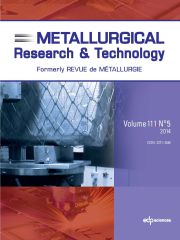Article contents
Recycling and by-products in the steel industry
Published online by Cambridge University Press: 04 June 2003
Abstract
The different activities described by the generic word recycling are presented along with an evaluation of the benefits of recycling in terms of natural resources or energy savings and reduction of Green House Gas emissions. A detailed analysis is presented of steel recycling, by-product recycling and end of life consumer goods recycling. The GHG emissions avoided thanks to sustainable steel recycling are evaluated in a long-term perspective. By-product recycling is also a major issue that has already been addressed with satisfactory results, as blast furnace slag valorization in the cement industry. This exemplifies the cross-business valorization of by-products with strong implications in terms of GHG emissions mitigation. Metal recovery is not yet as fully developed although a fairly satisfying solution is being implemented on the basis of the Rotary Hearth Furnace which separates iron from zinc with production of a DRI and concentration of zinc to a high enough level for direct use by zinc smelters. The future European regulations for consumer goods will require a high level of recyclability that will favour the design with metals instead of other materials such as plastics. Recycling is a complex, rich and fruitful concept that is popular today and will remain strong in the future. It functions both in the market economy and in the administrative world, with by-products moving around the various production shops within a business or between businesses of different crafts. Sustainable recycling is a significant and majority resource for the steel industry which, along with its partners in the recycling loop, has been a pioneer in the world of recycling.
- Type
- Research Article
- Information
- Metallurgical Research & Technology , Volume 100 , Issue 4: AciériesMétallurgieCoulée continueRéfractaires , April 2003 , pp. 339 - 348
- Copyright
- © La Revue de Métallurgie, 2003
- 5
- Cited by


